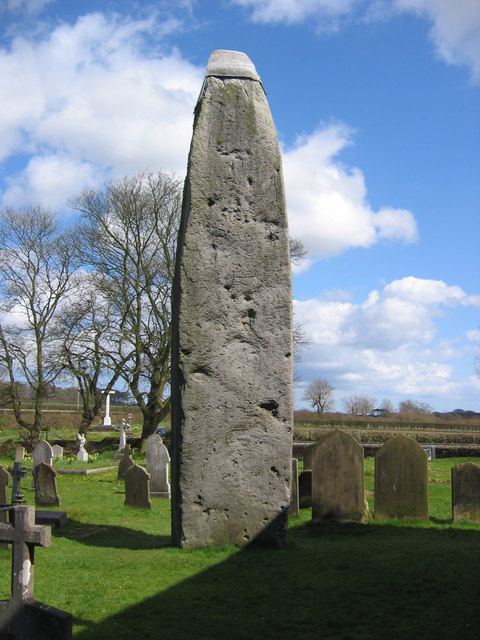Condition some damage | Material Moor Grit Conglomerate | |
 | ||
Similar Devil's Arrows, Gaulstown Portal Tomb, Meehambee Dolmen, The Bull Ring, Verziau of Gargantua | ||
Quicktrip rudston monolith
The Rudston Monolith at over 7.6 metres (25 ft) is the tallest megalith (standing stone) in the United Kingdom. It is situated in the churchyard in the village of Rudston (grid reference TA098678) in the East Riding of Yorkshire.
Contents
- Quicktrip rudston monolith
- The very best moment in my life rudston monolith
- Description
- Antiquarian accounts
- References
The very best moment in my life rudston monolith
Description
The stone is slender, with two large flat faces. It is approximately 1.75 metres (5 ft 9 in) wide, and just under one metre thick. The top appears to have broken off the stone. If pointed, the stone would originally have stood about 8.5 metres (28 ft). In 1773, the stone was capped in lead; this was later removed, though the stone is currently capped. The weight is estimated at 40 tonnes. The monolith is made of gritstone. The nearest source for the stone (Cayton or Cornelian Bay) is 9.9 miles (16 km) north of the site, although it may have been brought naturally to the site as a glacial erratic. The monument dates to the Late Neolithic or Early Bronze Age period. A possible fossilised dinosaur footprint is said to be on one side of the stone, though a study by English Heritage in 2015 concluded that this claim was unsubstantiated.
There is one other smaller stone, of the same type, in the churchyard, which was once situated near the large stone. The Norman church was almost certainly intentionally built on a site that was already considered sacred, a practice common through the country – indeed the name of Rudston is thought to come from the Old English "Rood-stane", meaning "cross-stone", implying that a stone already venerated was adapted for Christian purposes.
There are many other prehistoric monuments in the area, including four cursuses, three of which appear to converge towards the site of the monolith.
Antiquarian accounts
Sir William Strickland found "the dimensions of the monolith within ground as large as those without". Strickland found many skulls during his dig and suggested they might have been sacrificial.
Thomas Waller states that in 1861 during levelling of the churchyard the surface of the ground near the monolith was raised 5 feet (1.5 m).
